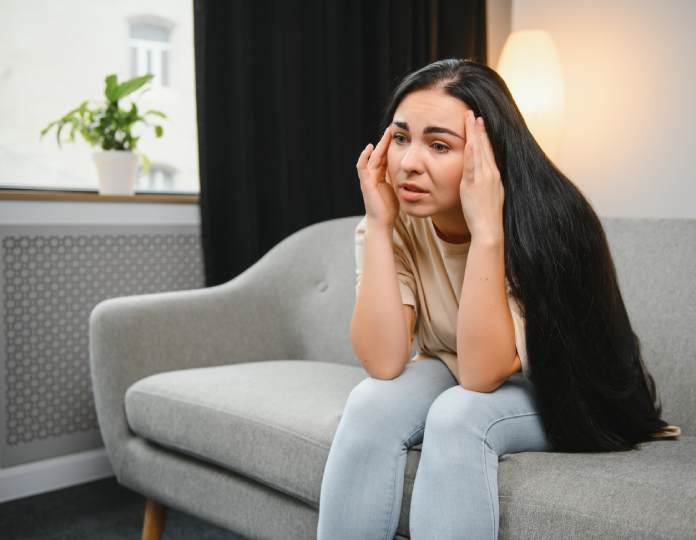Health is a fundamental human right, a global goal, and vital to the nation’s economic growth and internal stability. Physical and mental health have a bidirectional relationship. They are not separate entities and should be looked in unison to understand the significance of mental health. One affects another; poor physical health can lead to an increased risk of mental health issues; similarly, poor mental health conditions can negatively impact physical health. For the well-being of a human, both of these should be in a stable condition. Mental health is the basis for emotions, thinking, learning, communication, resilience, self-esteem, well-being, and to maintain relationships. We should understand that mental well-being will enhance the recovery in the treatment process for physical illness.
Innovate for community mental health awareness
According to WHO (World Health Organization); Mental disorders are generally characterized by a combination of abnormal thoughts, behaviors, perceptions, emotions, and relationships with others; which results in the dysfunction of Biological, Psychological, Social, and Occupational functioning of the affected persons as well their family members. There are multiple causes for mental health issues, including genetic, social, cultural, economic, political, and environmental factors.
Mental illness can affect anyone, regardless of age, gender, social status, race, religion, income, and geography.
Also Read: How Culture Shapes Mental Health and Influences Our Well-being
It can happen at any period over the life span of a human being from childhood, adolescence, adult, old age; three-fourths of all mental illness begins by age 24, which takes many forms; some are common, and some are severe (major); Common mental disorders are reported very frequently but they are often misdiagnosed; this leads to mismanagement resulting in long term disability, e.g., phobia, anxiety disorders, obsessive-compulsive disorder, depression (excluding severe depression with psychotic symptoms). Severe mental illness requires intensive and prolonged care with more significant morbidity and mortality; it includes schizophrenia, psychosis, bipolar affective disorder, and severe depression with psychotic symptoms.

Mental Health Statistics
According to the NIMHANS (National Institute of Mental health and Neurosciences) NMHS (National Mental Health Survey)-2016, the lifetime prevalence of any mental morbidity was 13.67; among all of them, the majority of the mental and behavioral problems were due to psychoactive substances like tobacco use (20.89), alcohol use (4.65), and followed by depressive disorder (5.25), 1 in every 20 people are suffering from the depression in India.
According to The Lancet Psychiatry research in 2017, 14.3 % of the Indians are suffering from any form of mental illness. National crime record bureau has revealed that 1,39,123 persons have died by suicide suicide in 2019, which is 3.4% more than the previous year.
Center for mental health law and policy director Dr. Soumitra Pathare conducted research in 2018, revealing that 1,34,000 have died by suicide, and children, youth, women were more among them. Embracing the world’s most significant economic power, countries like America have reported that nearly one in every 5 adults lives with a mental illness total of 51.5 million in 2019, and estimates suggest that only half of the people with mental illnesses receive treatment as per the latest NIMH report.
Also Read: Attachment Therapy Essentials for Mental Health
Treatments and Strategies
Mental health conditions are treatable. The treatment will be based upon the affected individual’s signs and symptoms, medications, psychotherapy, psychiatric social work interventions, and other psychosocial treatments. A comprehensive treatment plan advised by the multidisciplinary team will enhance the recovery and well-being of the affected individuals with mental illness. This is generally at various levels like
- individual level (medications, lifestyle modifications, coping skills, yoga, exercise, vocational guidance etc.)
- family level (educating the family about the illness, family support, care and address their burden, etc.) and
- Community level (reduce the stigma towards mental illness and its treatment, awareness programs, enhancing the support system, public health policies, advocacy, networking etc.) Many individuals with mental illness will continue to function in their daily life activities.
Psychiatrists, Clinical psychologist, psychiatric social worker, psychiatric nurse and other mental health clinicians help individuals and families understand mental illnesses and what they can do to control or cope with symptoms to improve health, wellness, quality of life, and function. It is also crucial that family members or friends recognize the changes or problems that a person does not see in themselves and provide support, empathy and advice, or take them to a mental health professional for consultation. There are several blockades to access to mental health treatment, low awareness about mental illness, strong beliefs and myths.
Myths and Addressing Challenges
Some myths include mental illness to be a result of bad deeds or black magic, there is no cure for mental illness or belief in treatment only by faith healers, it requires a longer duration of treatment, wrong perception towards the person with mental illness as a nuisance to the public, weak, harmful and dangerous. Stigma is in the foremost hindering help seeking for mental health issues., this, in turn, contributes to non-disclosure of the mental illness. Mental illness is nothing to be ashamed of; many people with mental illness do not want to talk or share about their condition with others. We should understand that mental illness is a medical condition like blood pressure or diabetes or heart disease etc., and treatments are available too.

The allocation of budget to the health care system every time is significantly less in India. n 2020, the central government has allotted 5.7% for health care, which is lower than the last budget and only 1% of GDP. The budget allocated for mental health care is 0.05 of the total health care budget; the average percentage of the total healthcare budget allocated to mental health in developed countries is at least 5 percent.
As per the W.H.O’s Global Health Workforce Alliance 22·8 skilled health workers per 10000 people are required for most countries to execute all essential health interventions. India’s mental health workforce is not up to the mark. A massive shortage of mental health professionals is also one of the challenging factors to provide mental health care services in India.
Also Read: How Positive Childhood Bonds Shape Adult Mental Health?
Challenges in Mental Healthcare Infrastructure
Our country needs 13,500 psychiatrists and 20,250 clinical psychologists, whereas 3800 psychiatrists and 900 clinical psychologists exist for mental health care services, according to the Ministry of Health and Family Welfare. A recent research finding from the Indian Journal of Psychiatry, India has 0.75 Psychiatrists and Psychologists per 100,000 populations, while the desirable number is anything above 3 Psychiatrists per 100,000 populations. The national prevalence rates for ‘all mental disorders’ arrived at are 70.5 (rural), and 73 (rural + urban) per 1000 population. The problem is critical in villages because of the high concentration of mental health specialists in urban areas. Except for Kerala, all other states fell short of the W.H.O’s requirement of at least one psychiatrist for every 100,000 persons.
India is currently short of 27,000 doctors based on the country’s current population; the prevalence of severe mental morbidity in India ranges from 3 to 10 per 1000, which is more than five times the bed strength available, and the number of beds had increased to only about 21,000. Currently, for every 10 million people with mental illness, there are only 30 Psychiatrists, 17 nurses, and 5 psychologists. Social workers constitute 0.07 % per 100,000 population. Health care systems have not yet adequately responded to the burden of mental health disorders due to multiple factors like shortage of funds, inadequate resources, and workforce.
The Role of Global Initiatives:
Treatment gap is increasing over the time due to these factors, as per NIMHANS NMHS-2016, the treatment gap for mental disorders ranged between 70 to 92% for different disorders: common mental disorder – 85.0%; severe mental disorder – 73.6%; psychosis – 75.5%; bipolar affective disorder – 70.4%; alcohol use disorder – 86.3%; tobacco use – 91.8%. In low- and middle-income countries, around 76% to 85% of the people with mental health disorders are not receiving treatment for their mental health disorders as per the WHO world mental health survey.
Also Read: Mental Health In India: Challenges and solutions
Keep this in mind, WHO has started the Mental Health Gap Action Program (MHGAP) in 2008 to promote mental health services at all levels. NIMHANS NMHS has recommended that an estimated 150 million persons need mental health interventions and care; less than 30 million are seeking care. According to the 30th section of the mental health care act 2017, the government shall take all the measures to create awareness about mental health and illness, reducing the stigma associated with mental illness.
Mental Health Literacy
However, mental health literacy is still low; India should invest in mental health awareness; it is the need of the hour as per the mental health professionals. Provisions of the Mental Health Care Act 2017 were not implemented and been neglected by many states, for example as per the Act, section 73, and the states shall constitute a mental health review board t check the number of mental health establishments existing in the state, the number of persons with mental illness.
These review boards hold the responsibility to supervise the functioning of the existing mental health institutions. If any irregularities are found, they have the right to cancel the license, impose a fine on the institute. Many states have not implemented these; only 19 states has constituted the review boards and performed the prescribed activities. According to the WHO, nearly more than 20% of the world’s population suffers from any form of mental illness. It is growing in number globally, The levels of anxiety, fear, isolation, emotional distress, and social distancing associated with the virus have become widespread as the world fights to bring COVID-19 under control. It is evident that the COVID-19 pandemic has impacted the mental health of individuals worldwide.
Therefore, this year’s theme for World Mental health Day (10th October) is ‘mental health for all’ as it comes when the entire world is rassling with the COVID-19 pandemic, which has impacted the mental health of millions of people across the globe.
Addressing Stigma in Rural Areas
Rural health problems have worsened due to existing malpractices, magico-religious practices, and unsafe and unhygienic conditions. The mental health care centers should initiate integrated promotive, preventive, curative, and rehabilitative services for the well-being of the needy. The scenario surrounding mental health has not changed much, especially in India, there is still stigma attached to mental illnesses, and the number of mental health care professionals in the country remains at an abysmal number. Addressing the lack of awareness, enhancing the accessibility, availability, affordability, and resources infrastructure associated with mental health is the need of the hour. Health care centers should function as one-stop information resource centers to provide information about legal aid and welfare benefits, legislation, suicide prevention. Proper implementation of national and district mental health programs is mandatory.
Also Read: Negative impact on the mental health of having siblings: study

The rate of stigmatization towards mental illness is high among the rural population. The recently central government has started a national comprehensive free mental health helpline KIRAN (1800 599 0019), to provide counselling for various mental health issues in 13 languages. It is vital to initiate the Taluka level mental health program (TMHP) across the country with adequate men power like psychiatrists, psychologists, and psychiatric social workers to deliver mental health services in the rural areas.
TMHP can be helpful to enhance the accessibility, availability, and affordability for the rural people too. It is vital to conduct awareness programs about mental well-being and reduce the stigma in the community.
Promoton of Mental Health Awareness through Education and Sensitization
It is vital to ensure mental health, access to a vulnerable population like children, women, older adults, and persons with disabilities. Sensitizing the different stakeholders associated with mental health is essential. Conducting awareness programs, workshops, and camps at schools, colleges, workplaces, and communities, using various communication modes like television, social media, radio, and print media about mental health is essential. Incorporate new and innovative approaches to promote mental health awareness in the community. Celebrities from various fields should come forward to promote awareness about mental health. Inclusion of curriculum about the basics of mental health in the academics will help the children for their well-being, a healthy emotional outlook in life.













Leave feedback about this